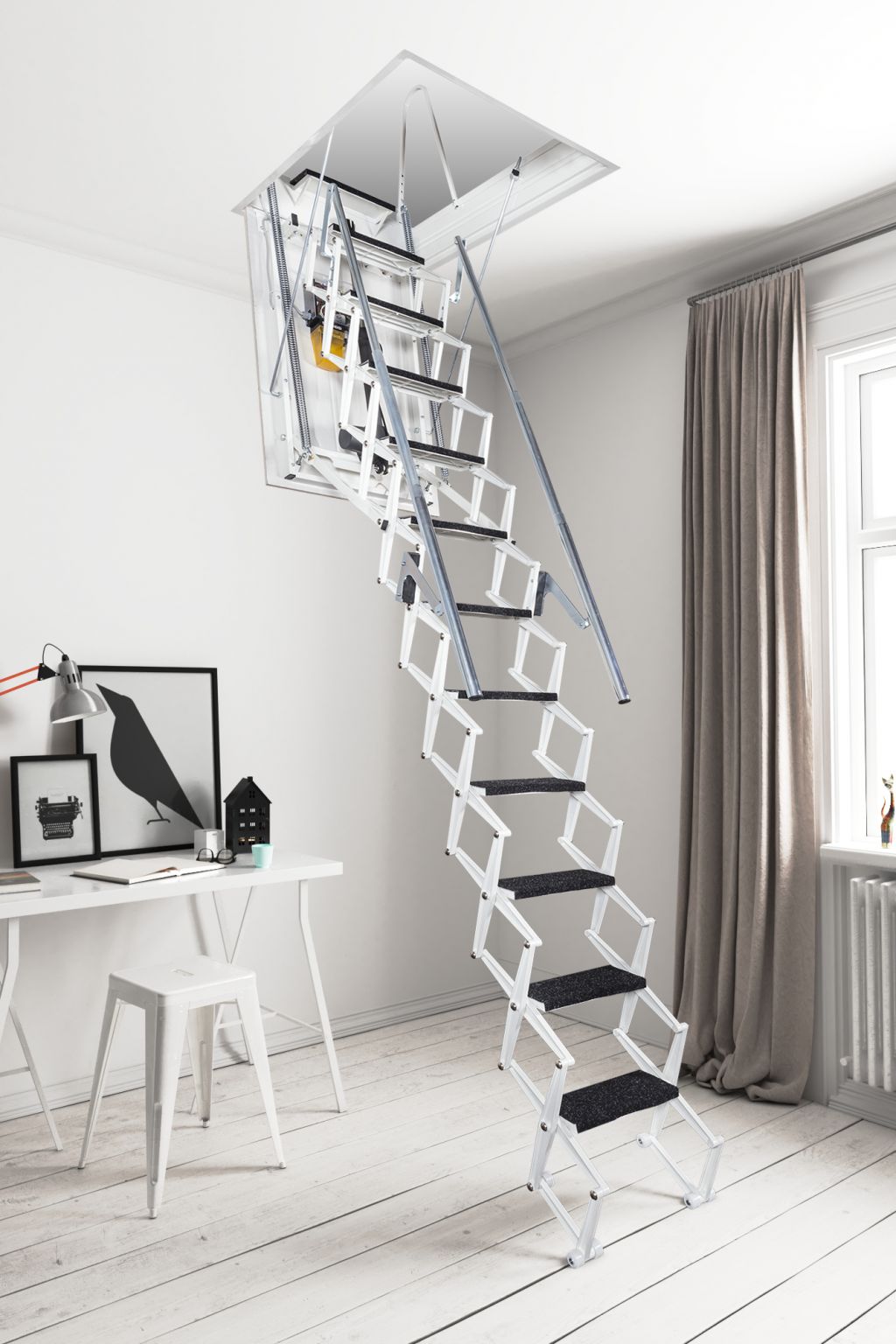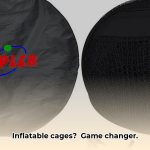Got an attic? It’s full of potential…and probably a bit of dust. Accessing it shouldn’t be a struggle. This comprehensive guide to attic stairs covers everything from choosing the right type for your home to ensuring they’re safe, energy-efficient, and easy to use. We’ll explore installation (DIY or professional), troubleshooting common problems, and even touch on future trends. Let’s unlock your attic’s potential!
Choosing the Perfect Attic Stairs
Choosing attic stairs can feel overwhelming. Let’s break down the options and help you find the perfect fit.
Types of Attic Stairs
-
Folding (Pull-Down): The most common type, folding neatly into the ceiling. These are generally affordable and space-saving, ideal for occasional access. They’re available in wood, aluminum, and steel. Learn more about convenient and space-saving attic door with ladder options.
-
Scissor: Compact and perfect for smaller openings. If space is tight, scissor stairs are likely your best bet. They tend to have a lower weight capacity and a steeper climb.
-
Telescoping: Offering flexibility, these extend to reach your attic and retract for compact storage. They’re probably the best choice for unconventional access points. Some experts suggest these may be less stable than other types.
-
Electric: Motorized for ultimate convenience, opening and closing with the push of a button. While they offer unparalleled ease of use, they’re also the priciest and require electrical work.
Planning and Installation
Careful planning is essential for a successful attic stair project.
Measuring and Considerations
Before purchasing, grab a tape measure and note:
- Ceiling Height: Ensures you choose the correct length stairs.
- Rough Opening Dimensions: Confirms you have enough space for installation.
Also, consider:
- Weight Capacity: Choose stairs that can safely handle anticipated loads.
- Insulation: A well-insulated attic door with ladder can significantly improve energy efficiency.
- Safety Features: Handrails and fire-rated construction are crucial for safety.
- Material: Wood, aluminum, and steel each have their own advantages and disadvantages (detailed below).
Materials: A Closer Look
| Material | Pros | Cons |
|---|---|---|
| Wood | Classic look, strong, generally affordable | Susceptible to moisture and pests |
| Aluminum | Lightweight, rust-resistant | Can feel less sturdy than wood or steel |
| Steel | Durable, high weight capacity | Can be more expensive |
DIY vs. Professional Installation
While some attic stairs are relatively easy to install yourself, others are more complex. If you’re comfortable with tools and home improvement projects, a DIY installation might be feasible. However, for complex installations or if you’re unsure, it’s best to call a professional. Improper installation can be dangerous and damage your ceiling.
Maintaining and Enhancing Your Attic Stairs
Once installed, proper maintenance is key.
Maintenance Tips
- Regular Inspections: Check for loose hardware, wear, and damage.
- Lubrication: Keep moving parts lubricated for smooth operation.
- Weight Limits: Never exceed the manufacturer’s specified weight limit.
- Secure Locking: Always ensure the stairs are securely locked when not in use.
Boosting Energy Efficiency
An insulated attic stair door is one of the easiest ways to improve your home’s energy efficiency. It prevents conditioned air from escaping into your attic. Some models feature airtight seals and advanced insulation materials for maximum energy savings. Transform your unused attic space with these practical attic storage ideas.
Smart Attic Stairs: The Future of Access
Emerging smart home technologies are beginning to integrate with attic stairs, suggesting future control through voice commands or apps.
Understanding Attic Access Terminology
Let’s clarify the sometimes confusing terminology surrounding attic access. “Attic stairs” is often used as a general term, encompassing various access methods like pull-down ladders, permanent staircases, and even scuttle holes with simple ladders. Technically, “attic staircase” usually refers to a fixed, built-in structure, while “attic ladder” describes a retractable or folding option.
Types of Attic Access
- Pull-down attic stairs/ladders: These space-saving marvels disappear into the ceiling, perfect for occasional use.
- Permanent attic staircases: Built-in structures offering wider, more stable access, ideal for frequent use and heavier items.
- Scuttle holes: Small ceiling openings, often used with pull-down ladders or compact stairs, typically found in attics primarily used for storage.
Choosing the right access depends on factors like attic size, intended use (storage vs. living space), frequency of access, available space, and budget.
Choosing the Right Access
Consider these questions:
- How often will I use the attic?
- What will I store in the attic?
- What type of attic do I have (finished, unfinished, scuttle, truss)?
- What is my budget?
Safety is paramount, regardless of your chosen access type. Ensure it meets building codes, can handle the anticipated weight, and includes features like handrails and proper lighting.
Determining the Cost of Attic Stairs
The cost of attic stairs depends on several factors.
Factors Affecting Cost
- Type of Stairs: Pull-down ladders are generally more affordable than permanent staircases.
- Material: Wood is often the most economical, followed by aluminum, then steel.
- Features: Insulation, handrails, and fire-rated construction add to the cost.
- Installation Complexity: Framing a new opening, electrical work, and finishing increase labor costs.
Estimated Costs
| Stair Type | Material | Estimated Cost (Kit) | Estimated Installation Cost |
|---|---|---|---|
| Pull-Down Ladder | Wood | $200 – $800 | $300 – $600 |
| Pull-Down Ladder | Metal/Aluminum | $500 – $2,000 | $400 – $700 |
| Basic Permanent | Wood | $800 – $2,500 | $600 – $1,500 |
| Custom Permanent | Varies | $2,500+ | $1,000+ |
These are estimates and can vary based on location, features, and contractor pricing.
DIY vs. Professional Installation
DIY installation can save on labor costs but requires careful planning, accurate measurement, and adherence to safety guidelines. Complex projects or those requiring structural modifications are best left to professionals.
Evaluating the Worth of Attic Stairs
Are attic stairs a worthwhile investment? Let’s explore the key factors.
Benefits
- Increased Usable Space: Attic stairs transform your attic from a forgotten space into valuable storage or even additional living space.
- Convenience: Easy and safe access to your attic.
- Increased Home Value: Adding usable square footage can potentially boost your home’s resale value.
Energy Efficiency and Cost Savings
Insulating and sealing your attic hatch significantly impacts energy efficiency. A small investment in insulation can drastically improve your attic’s R-value, offering long-term energy savings.
Safety is Key
Proper lighting, sturdy handrails, and adhering to weight limits are crucial for safe attic access.
Choosing the Right Type
The best type of attic stairs depends on your needs and home. Consider frequency of use, weight capacity requirements, and the size of your attic opening. Ongoing research continues to improve attic access technology and safety standards. Consulting with local professionals and building inspectors ensures your project complies with current guidelines.
By carefully considering these factors, you can make an informed decision about whether attic stairs are the right investment for your home. They likely are, if you value increased storage or living space, convenience, and potential energy savings! Remember to prioritize safety and proper installation for optimal long-term benefits.
- Burning Plastic Smell in House: Causes, Solutions, and Safety Measures - April 8, 2025
- Best Bug Killer for Yard: Effective Pest Control Guide (2024) - April 8, 2025
- Brown Recluse Spider Bites: Identification, Treatment, and Prevention - April 8, 2025










